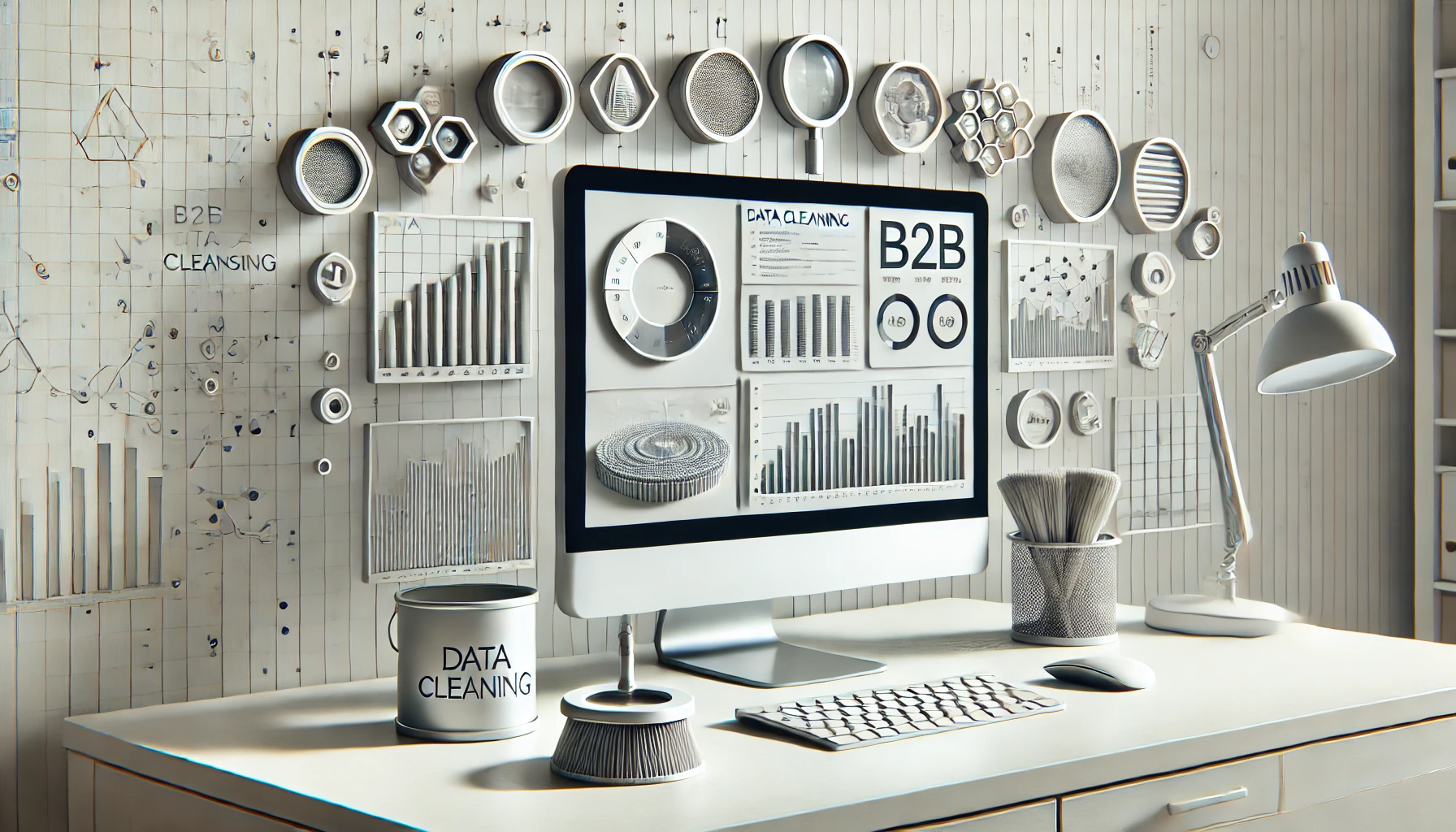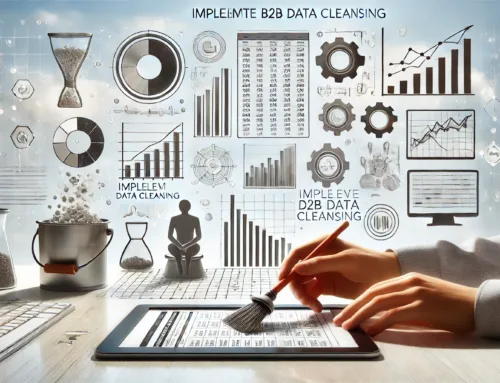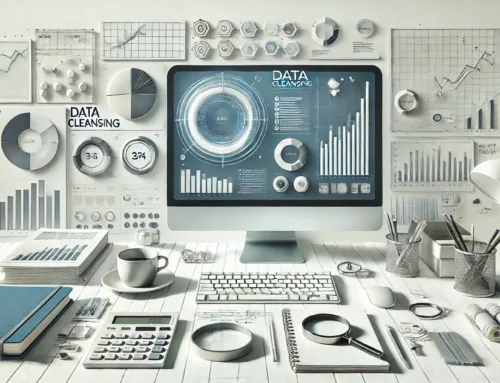You’ve probably heard that up to 25% of B2B data decays every year, impacting the effectiveness of your marketing campaigns and sales efforts. To combat this challenge and ensure your data remains accurate and reliable, it’s essential to adopt a proactive approach to data cleansing. From understanding your data characteristics to implementing cutting-edge tools and techniques, there are several key steps you can take to enhance your B2B data cleansing process. Stay tuned to discover how you can elevate your data quality and drive better business outcomes.
Understand Data Characteristics
To effectively enhance B2B data cleansing, it is essential to begin by gaining a comprehensive understanding of the data characteristics you are dealing with. Data profiling plays a crucial role in this process, allowing you to examine the quality, structure, and content of your data. By conducting thorough data profiling, you can identify inconsistencies, errors, and duplicates within your dataset.
Moreover, data standardization is key to ensuring that your data is uniform and consistent. This involves establishing guidelines for formatting, naming conventions, and data categorization. By standardizing your data, you can improve its accuracy and reliability, making it easier to clean and maintain.
Understanding the nuances of your data through profiling and standardization empowers you to make informed decisions when cleansing B2B data. It provides a solid foundation for implementing effective data cleansing strategies and ensures that the data you work with is of high quality and integrity.
Define Enhancement Goals
When defining enhancement goals for your B2B data cleansing process, it is imperative to establish clear objectives that align with your overall business strategy. Start by identifying areas where data enrichment can bring value. This could involve enhancing existing data with additional information to improve customer segmentation accuracy. Setting performance metrics is crucial for measuring the success of your data enhancement efforts. Define key indicators such as data accuracy rates and customer segmentation effectiveness to track progress and ensure your goals are being met.
Another essential aspect to consider when defining enhancement goals is data validation. Ensure that the data being added during the enrichment process is accurate and reliable. By setting specific validation criteria, you can maintain data integrity and prevent the introduction of inaccuracies into your database.
Ultimately, by focusing on customer segmentation accuracy, data enrichment, and establishing performance metrics for data validation, you can enhance the quality of your B2B data and improve the overall effectiveness of your data cleansing process.
Implement Advanced Tools
Advanced tools play a pivotal role in streamlining and enhancing the efficiency of your B2B data cleansing process. Utilizing tools for data profiling allows you to gain a deeper understanding of your data, identifying inconsistencies, duplicates, and inaccuracies. Data visualization tools help in presenting complex data sets in a visual format, making it easier to interpret and analyze.
Data standardization tools ensure that all your data follows a uniform format, making it easier to compare and deduplicate records. These tools help in maintaining consistency across your databases, reducing errors and improving overall data quality. Furthermore, data enrichment tools can supplement your existing data with additional information, such as company details or industry classifications, enhancing the value of your database.
Monitor Data Quality
To ensure the accuracy and reliability of your B2B data, implementing automated data checks is crucial. By setting up regular audits and reviews, you can proactively identify and address any discrepancies or errors in your database. Monitoring data quality through these processes will help you maintain a high standard of data integrity within your organization.
Automated Data Checks
By setting up automated data checks, you can continuously monitor the quality of your B2B data without the need for manual intervention. Utilizing data profiling and anomaly detection techniques, these automated checks can help in identifying inconsistencies, errors, and irregularities within your database. Machine learning algorithms can be employed to automate data scrubbing processes, improving data accuracy and consistency.
Automated data checks offer real-time monitoring and immediate alerts when data quality issues are detected, allowing for prompt corrective actions. By implementing these checks, you can ensure that your B2B data remains clean, reliable, and up-to-date. Regularly scheduled automated checks can help in maintaining data integrity and consistency over time, reducing the risk of inaccurate information impacting your business decisions.
Regular Audits and Reviews
Enhancing the quality of your B2B data requires the implementation of regular audits and reviews to monitor data quality effectively. Data validation is a crucial aspect of this process, ensuring that the information in your database is accurate, consistent, and up to date. By conducting regular audits, you can identify any discrepancies or errors in your data and take corrective action promptly.
Compliance checks are also essential during these audits to ensure that your data aligns with industry standards, regulations, and internal policies. By reviewing your data regularly, you can ensure that it meets all necessary compliance requirements, reducing the risk of fines or penalties due to non-compliance.
Regular audits and reviews not only help maintain the quality of your B2B data but also provide insights into areas that may need improvement. By staying proactive and vigilant in monitoring your data quality, you can enhance the overall efficiency and reliability of your data management processes.
Maintain Data Accuracy
To maintain data accuracy in your B2B database, it is crucial to validate the sources of your information regularly. By ensuring that the data sources are reliable and up-to-date, you can minimize errors and discrepancies in your records. Regular updates will help you keep pace with changes in your business environment and maintain the integrity of your data.
Validate Data Sources
To maintain data accuracy when enhancing B2B data cleansing, validating data sources is crucial. Utilizing data validation techniques ensures that the information you are working with is accurate and up-to-date. Here are three key strategies to validate data sources effectively:
- Cross-Referencing: Compare data from multiple reliable sources to verify its accuracy. By cross-referencing information, you can identify discrepancies and ensure that the data is consistent across various platforms.
- Validation Tools: Implement data validation tools to automatically check and validate the accuracy of your data. These tools can help identify errors, inconsistencies, and missing information, enabling you to rectify issues promptly.
- Regular Audits: Conduct regular audits of your data sources to ensure that the information remains reliable and relevant. By periodically reviewing and validating your data, you can maintain its accuracy and make informed business decisions based on up-to-date information.
Validating data sources is essential for maintaining data accuracy in B2B data cleansing processes, ultimately leading to more effective decision-making and improved business outcomes.
Regularly Update Information
Regularly updating information is a critical aspect of maintaining data accuracy in B2B data cleansing processes. By consistently updating your database, you ensure that the information you hold is current and relevant. This practice not only enhances data accuracy but also improves the overall efficiency of your operations. Regular updates allow you to validate data sources, ensuring that the information you rely on is accurate and up to date. Outdated information can lead to errors in decision-making and can hinder your business’s growth. By staying proactive and implementing a regular update schedule, you can prevent data discrepancies and maintain high levels of information accuracy.
Data validation plays a crucial role in this process, as it helps in identifying any inconsistencies or inaccuracies within your database. By regularly updating information and validating data sources, you can ensure that your B2B data remains reliable and up-to-date, ultimately improving the effectiveness of your data cleansing efforts.
Secure Data Privacy
In today’s digital age, ensuring secure data privacy is paramount for businesses engaged in B2B data cleansing. To maintain the confidentiality and integrity of sensitive information, consider the following:
- Compliance Regulations: Adhering to industry-specific compliance regulations such as GDPR or HIPAA ensures that your data handling practices align with legal requirements, protecting both your business and your clients.
- Encryption Methods: Implement robust encryption methods like AES (Advanced Encryption Standard) to safeguard data during transmission and storage, minimizing the risk of unauthorized access or breaches.
- Data Protection: Utilize multi-factor authentication, access controls, and regular security audits to fortify your data protection measures, creating layers of defense against potential cyber threats.
Update Data Records
Ensuring the accuracy and relevance of your data records is a critical aspect of maintaining a robust B2B database. To update data records effectively, consider implementing data enrichment and normalization techniques. Data enrichment involves enhancing your existing dataset by adding valuable information such as industry trends, company size, or key contacts. This process can help you gain deeper insights into your target audience and improve the overall quality of your database.
On the other hand, data normalization focuses on organizing and structuring your data to ensure consistency and uniformity. By standardizing formats, abbreviations, and data fields, you can avoid duplication and errors within your records. Regularly updating your data through enrichment and normalization not only keeps your information current but also enhances its usability for marketing campaigns and decision-making processes.
Frequently Asked Questions
How Can I Ensure Data Quality Consistency Across Different Departments?
To ensure data quality consistency across departments, focus on data validation techniques. Promote cross-department collaboration to establish unified standards. Regular audits, clear communication channels, and shared best practices are key to maintaining a high level of data integrity company-wide.
What Are the Best Practices for Handling Outdated Data Records?
When managing outdated data records, ensure data validation and enrichment. Implement data standardization and normalization practices to maintain accuracy. Regularly update records, cross-reference with reliable sources, and cleanse redundant or obsolete information for efficiency.
How Can I Protect Sensitive Information During the Data Cleansing Process?
When safeguarding sensitive information during data cleansing, you must prioritize data encryption like fortifying a digital vault. Implement strict access controls to limit who can view or manipulate the data, ensuring only authorized personnel handle it securely.
Are There Any Industry-Specific Regulations to Consider for Data Privacy?
When it comes to data privacy, compliance considerations are crucial. Different industries have specific regulations governing data protection. Understanding these legal implications is essential to ensure that your B2B data cleansing processes align with industry-specific privacy requirements.
What Measures Can Be Taken to Prevent Data Duplication in the Cleansing Process?
To prevent data duplication during the cleansing process, you should focus on effective duplicate detection and robust data matching techniques. These measures help ensure accurate data consolidation and reduce errors, enhancing the quality of your B2B data.




